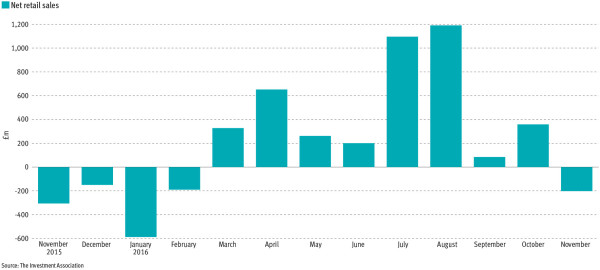
Article 3 / 4
The Guide: Investing for IncomeBeware of Trump effect on bond yields

Political surprises and economic uncertainty in certain parts of the world gave fixed income investors a roller-coaster ride in 2016, and the outlook for this year suggests investors should prepare for more of the same.
The inauguration of Donald Trump as US president and the upcoming Brexit negotiations, once Article 50 is triggered, could result in even more upsets in the bond markets. But there is some cause for optimism for investors.
Nick Gartside, manager of the JPM Global Bond Opportunities fund, points out that given some “previously politically unthinkable things” that happened in 2016, bond returns “have been remarkable” through those surprises.
He explains: “Looking back it has been a year of two halves. In the first part of the year, investors were concerned about economic recession – as odd as that sounds now. In the first eight or so weeks of the year, risk assets such as equities and lower credit quality bonds performed poorly. Then central banks around the world came to the rescue by reducing interest rates, notably in Japan and Europe. Those actions collectively helped push bond yields down and prices up. That really culminated in [the EU referendum], in which risk-off sentiment immediately following [the vote] pushed bond yields to near all-time lows.
“The narrative then changed profoundly. The second part of the year has been dominated by the shift from monetary to fiscal policy as the primary driver of sentiment. Investors are focused on the role that fiscal policy will now play as governments step up and increase their deficits.
“In other words, ‘Trumponomics’ has come to the fore. This means that government bond yields will go higher and prices will go lower.”
But Mr Gartside adds: “Not all bonds are equal. The ones that investors should be sharpening their pencils for are corporate bonds. Increased economic activity is likely to mean more growth and more inflation, which will help underwrite credit risk and support corporate bonds. Stronger growth is also likely to mean lower default rates and positive support for high-yield debt.”
Jim Leaviss, head of retail fixed interest at M&G Investments, says the sharp sell-off in government bonds was among the key reactions in financial markets to the US election result. But he adds it is not yet clear whether “this is just another blip, or the start of a more sustained move back towards ‘normal’ yield levels after years at close to historic lows”.
Mr Leaviss adds that Mr Trump should have the political power to advance his headline economic policies of significant infrastructure spending and big cuts in corporation tax, alongside expectations of trade-protection measures.
“For bond investors, it’s a cocktail that adds up to increased government borrowing and firmer inflation prospects,” he says.
While the presidency of Mr Trump remains one of the key issues in 2017, David Lafferty, chief economist at Natixis Global Asset Management, notes that although towards the end of 2016 “fears of ‘Trumpflation’ sent yields skyrocketing and bond investors into a panic”, there is the possibility “much of [this] has already been priced into the bond markets in 2016”.
Mr Lafferty continues: “We think high-quality bonds look relatively unappealing, but returns should be less terrible moving forward. On a total return basis, we still find the corporate sectors of the bond market more attractive than sovereign, but the gap between the two has closed somewhat.”
Bill Harer, head of fixed interest, credit research and UK-linked funds at Canada Life Investments, says an important feature in 2017 will be policymakers moving away from loose monetary policy and towards more fiscal expansion. But he points out that this move will lead to more supply of government bonds, which will put additional stress on a market that has sold off sharply in recent months.
“We believe this pressure can continue in 2017 as investors face an environment of rising inflation, rising interest rates in the US and quantitative easing drawing to a close,” Mr Harer says.
“However, the Bank of England will be slow to follow the US in raising interest rates, and we envisage a 2 per cent yield on 10-year gilts by the end of 2017. This would simply take gilts back to the levels at the start of 2016, which is not an unrealistic scenario.
“We still believe corporate bonds offer better value than government debt in this environment, with pension funds continuing to chase the higher yields offered by corporate debt. With yields expected to rise, it is prudent to have increased allocations to more defensive, shorter-duration assets.”
Nyree Stewart is features editor at Investment Adviser



